“Balance of Terror”: Star Trek, History, and National Security
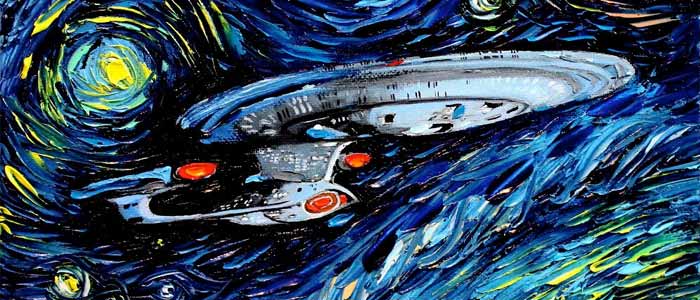
“Balance of Terror,” first broadcast on December 15th, 1966—and now celebrating its 50th anniversary—has long been seen as a classic episode of the original Star Trek. It involves a series of space battles between the Enterprise and a Romulan Bird-of-Prey around the Neutral Zone, the restricted region of space separating the Federation and the Romulan Empire. The Neutral Zone evokes the Korean Demilitarized Zone, the Iron Curtain, and the 17th parallel separating North and South Vietnam, which was a war zone when the episode aired.
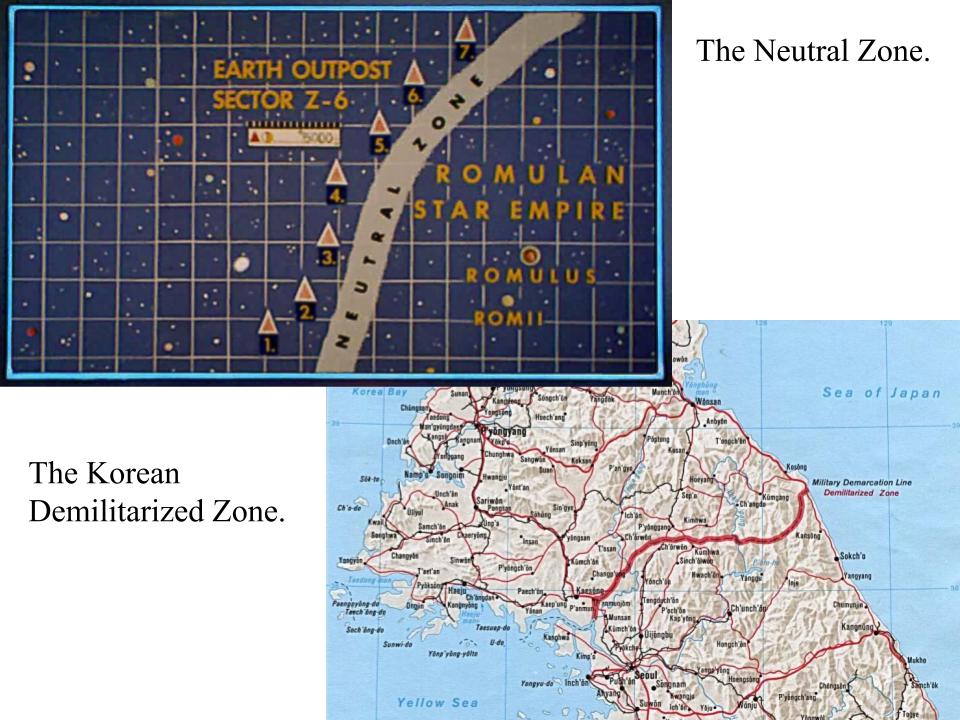
Both Captain Kirk (William Shatner) and the Romulan Commander (Mark Lenard) know that their clash could ignite a devastating full-scale war, paralleling the threat of nuclear war at the time between the United States and the Soviet Union. Meanwhile, on the bridge, Lieutenant Stiles (Paul Comi) questions the loyalty of Spock (Leonard Nimoy) because he looks like a Romulan.
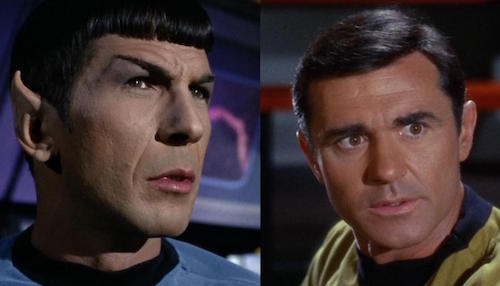
It has been little noticed that the title of the episode, “Balance of Terror,” is an exact quote from then-Secretary of Defense Robert McNamara’s description of the Cold War, with its potential for Mutually Assured Destruction. Star Trek has sometimes been criticized as a near-utopia where greed and discrimination have mostly been overcome, but “Balance of Terror” has a militaristic edge, and reveals that bigotry on the bridge is almost as much of a threat as the Romulans.
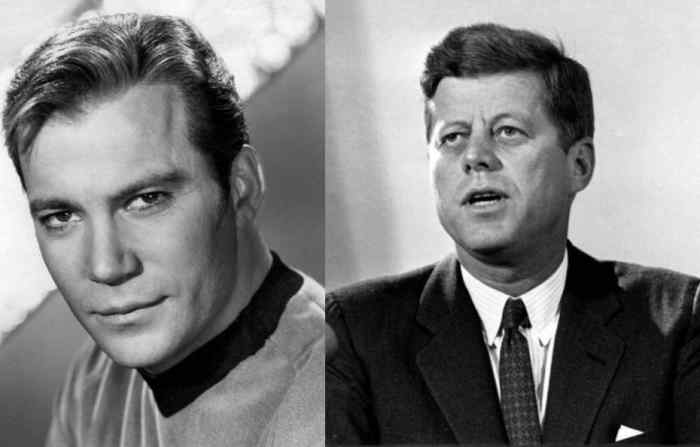
President John F. Kennedy’s handling of the Cuban Missile Crisis in 1962 is a key event to start with in understanding the historical context of this episode. From Star Trek’s beginning it seemed that the character of Captain Kirk was inspired in part by President Kennedy (Gross, p.34), and JFK’s “New Frontier” was a template for Star Trek’s “Final Frontier.” Star Trek was progressive Cold War liberalism projected into the future. And arguably Kennedy’s most important achievement was avoiding nuclear war after the Soviet Union installed scores of nuclear missiles in Cuba. As Kennedy said in a televised address to the nation on October 22nd, 1962:
This Government, as promised, has maintained the closest surveillance of the Soviet military buildup on the island of Cuba. Within the past week, unmistakable evidence has established the fact that a series of offensive missile sites [are] now in preparation….The purpose of these bases can be none other than to provide a nuclear strike capability against the Western Hemisphere.
Kennedy went on to call the missiles a “clear and present danger” to the United States, adding that “The 1930s taught us a clear lesson: aggressive conduct, if allowed to go unchecked and unchallenged, ultimately leads to war….It shall be the policy of this nation to regard any nuclear missile launched from Cuba against any nation in the Western Hemisphere as an attack by the Soviet Union on the United States, requiring a full retaliatory response.”
A nuclear holocaust threatened the world. The US blockaded Cuba, and demanded that the missiles be removed. Kennedy did not mention that the US had nuclear missiles in Turkey at the time, about as close to the USSR as Cuba’s were to the United States. Nevertheless, the secret Soviet installation of nuclear missiles in Cuba—after Soviet assurances to the contrary—was a destabilizing move that plunged the world into crisis. Behind the scenes, most of the US military recommended to Kennedy a massive bombing of Cuba, followed by an invasion. But, as Michael Dobbs writes in his book on the Cuban Missile Crisis, “the Soviet nuclear arsenal on Cuba far exceeded the worst nightmares of anyone in Washington” (p.58). JFK resisted the military’s plans, fearing that an invasion might ignite a nuclear war. And many nuclear weapons in Cuba were, in fact, already operational. In other words, if the US had invaded Cuba this likely would have escalated into a full-scale nuclear war with the Soviet Union, with thousands of nuclear weapons deployed by each side against the other, and hundreds of millions dead.
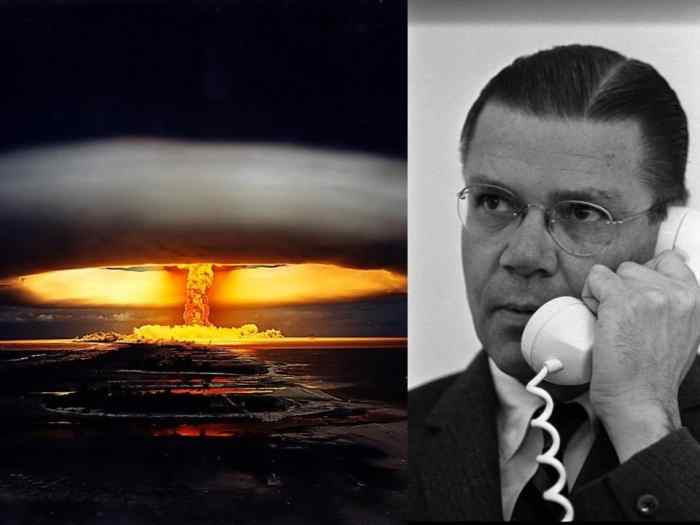
As Kennedy’s Defense Secretary Robert McNamara later wrote of the crisis: “I walked out of the president’s Oval Office, and…I thought I might never live to see another Saturday night” (Dobbs, p.311). McNamara added in an interview with the Saturday Evening Post, published in December of 1962, that the whole world was in a “balance of terror.”
The crisis was finally resolved because Kennedy offered to secretly remove US missiles in Turkey after the Soviets removed theirs from Cuba. Why was Kennedy effective at resolving the crisis? In part because he had recently read Barbara Tuchman’s bestselling book about World War I, The Guns of August. The thesis of The Guns of August is that miscalculation and misunderstanding can lead to a devastating world war that kills millions. Kennedy was so impressed with the book that he had his aides read it, and ordered copies of The Guns of August distributed to every US military base in the world (Dobbs, p.226). This book is possibly why we are all alive today—a compelling example of a historian changing the course of history.
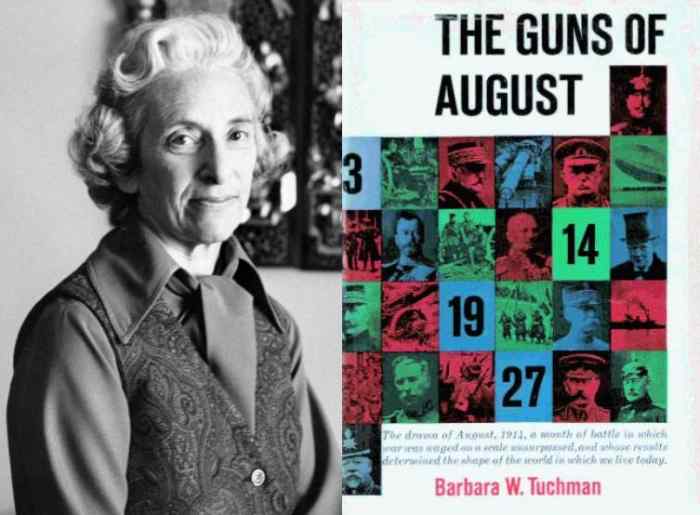
The Cuban Missile Crisis was a shock to the United States, and one that for some evoked the surprise attack on Pearl Harbor. “Balance of Terror” was broadcast a week after the 25th anniversary of that attack, and there was a lot of media attention given to this anniversary. “Balance of Terror” similarly begins with a surprise attack on the Federation surveillance outposts that line the Neutral Zone. As Kirk is about to perform a wedding ceremony in the ship’s chapel, Ensign Sulu (George Takei) interrupts with a ship-wide announcement: “Alert! Captain to the Bridge. All decks alert.”
On the bridge, Uhura (Nichelle Nichols) reports to Kirk that Outpost four is under attack. Kirk then asks Spock to show all decks a chart showing the Neutral Zone and the Earth outposts—three of which have already been destroyed—as well as the position of the Enterprise as it moves in at maximum warp. Kirk announces to the ship that “In our next action, we can risk neither miscalculation nor error,” and then turns the briefing over to Spock, who says:
Referring to the map on your screens you will note beyond the moving position of our vessel, a line of Earth outpost stations. Constructed on asteroids, they monitor the Neutral Zone established by treaty after the Earth-Romulan conflict a century ago. As you may recall from your histories, this conflict was fought…with primitive atomic weapons. Earth believes the Romulans to be warlike, cruel, treacherous. And only the Romulans know what they think of Earth.
Even the name “Romulans” evokes the Russians during the Cold War. But the name also, of course, references the Roman Empire, especially since the names of two of their key planets, Romulus (their capital) and Remus, come from the mythological founding brothers of Rome. Although the situation is different from the Cuban Missile Crisis, Kirk, like Kennedy, is a rational leader who seeks to prevent a larger war. But Lt. Stiles, at the helm next to Sulu, recommends immediate attack:
STILES: We know Outpost four has been attacked, sir, so if we intercept the Romulans now—
KIRK: After a whole century, what will a Romulan ship look like, Mister Stiles? I doubt they’ll radio and identify themselves.
STILES: You’ll know, sir. They’re painted like a giant bird-of-prey.
KIRK: I had no idea that history was your specialty.
STILES: Family history. There was a Captain Stiles was in the space service then. Two Commanders and several junior officers. All lost in that war, sir.
KIRK: Their war, Mister Stiles. Not yours. Don’t forget it.
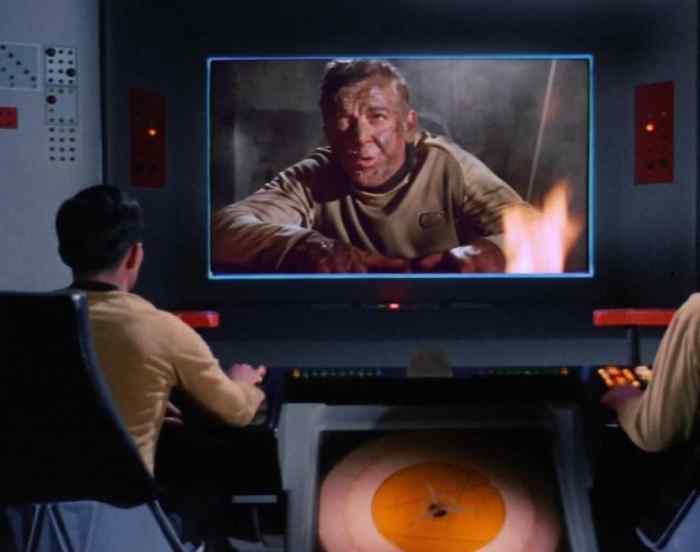
We then hear from Outpost Four, where Commander Hanson is the sole survivor of the Romulan attack. And he reports that after the attack “the whole vessel disappeared.” Suddenly, the Bird-of-Prey reappears and destroys the remains of Outpost Four, killing Hanson before vanishing again with its cloaking device.
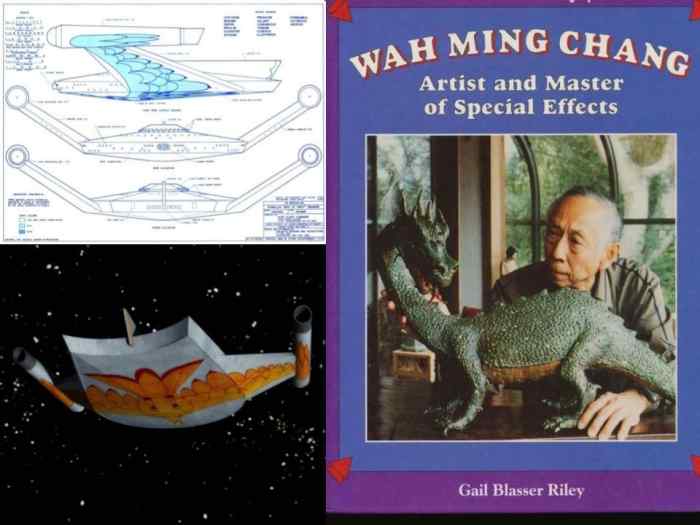
The elegant Romulan ship was created by Chinese-American designer Wah Ming Chang, who also designed the tricorder, the first-generation laser pistol, and the communicator, which was the inspiration for the flip phone of the 1990s. Chang also designed the appearances of many alien species seen in Star Trek, including the Talosians, the Salt Vampire, Blalock, the Gorn, and even the Tribbles. For the Bird-of-Prey emblem, he drew upon the symbol of the predatory eagle, used by the Roman Empire, Napoleon Bonaparte, and the Nazis.
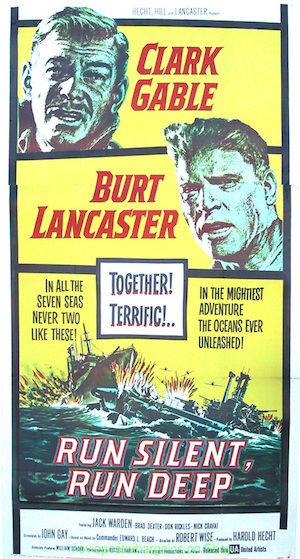
The Romulan cloaking device anticipates the “stealth technology” of Air Force bombers and fighters of a few decades later, but it also reaches back to the “silent running” mode of submarines starting in World War II. One of the movies that influenced Paul Schneider, the author of the “Balance of Terror” teleplay, was Run Silent, Run Deep, a 1958 submarine film starring Clark Gable that was directed by Robert Wise (who later directed Star Trek: The Motion Picture). In Run Silent, Run Deep, Gable plays a submarine captain who seems almost Ahab-like in his obsessive quest for a Japanese ship that he eventually destroys.
This is similar to Kirk’s relentless pursuit of the Romulan Bird-of-Prey in “Balance of Terror.” But unlike in many military movies, which feature leaders who seem to command almost solo, from Gable, to Robert Mitchum in The Enemy Below (1957), to Gene Hackman in the 1995 sub movie Crimson Tide, Kirk has a more group-oriented mode of command in “Balance of Terror.”
Like Kennedy with his Executive Committee, or ExCom, during the Cuban Missile Crisis, Kirk consults extensively with his crew around a briefing table to analyze the situation and get recommendations. This is a model of rational, knowledge-based decision making, as opposed to a gut-based, shoot-first and figure-it-out later approach. Seated around a table, Spock holds a fragment of metal retrieved from the wreckage of Outpost Four:
SPOCK: This is the hardest substance known to our science.
[He crushes it with his hand]
SPOCK: Lab theorizes an enveloping energy plasma forcing an implosion.
KIRK: Comments?
SPOCK: Obviously, their weaponry is superior to ours, and they have a practical invisibility screen.
MCCOY: You’re discussing tactics. Do you realise what this really comes down to? Millions and millions of lives hanging on what this vessel does.
SPOCK: Or on what this vessel fails to do, Doctor.
Going around the table Kirk learns from Engineer Scotty (James Doohan) that the Enterprise has superior engines and is faster than the Bird-of-Prey. Stiles again recommends immediate attack, but Sulu replies, “Attack without a visible target? How do we aim our phasers?”
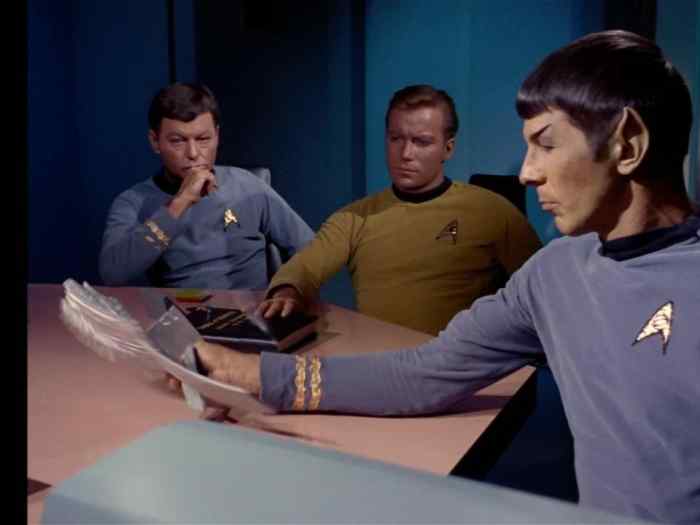
But Stiles insists, echoing the words of Kennedy and other Cold Warriors: “These are Romulans! You run away from them and you guarantee war …. You know that, Mister Science Officer. You’re the expert on these people, but you’ve always left out that one point. Why? I’m very interested in why.”
Stiles has questioned Spock’s loyalty since earlier when the Enterprise intercepted a Romulan message, revealing that Romulans look just like Vulcans. Kirk asks Uhura to decode the remainder of the message, and Stiles makes a snide remark:
STILES: Give it to Spock.
KIRK: I didn’t quite get that, Mister Stiles.
STILES: Nothing, sir.
KIRK: Repeat it.
STILES: I was suggesting that Mister Spock could probably translate it for you, sir.
KIRK: I assume you’re complimenting Mister Spock on his ability to decode.
STILES: I’m not sure, sir.
KIRK: Well, here’s one thing you can be sure of, Mister. Leave any bigotry in your quarters. There’s no room for it on the Bridge. Do I make myself clear?
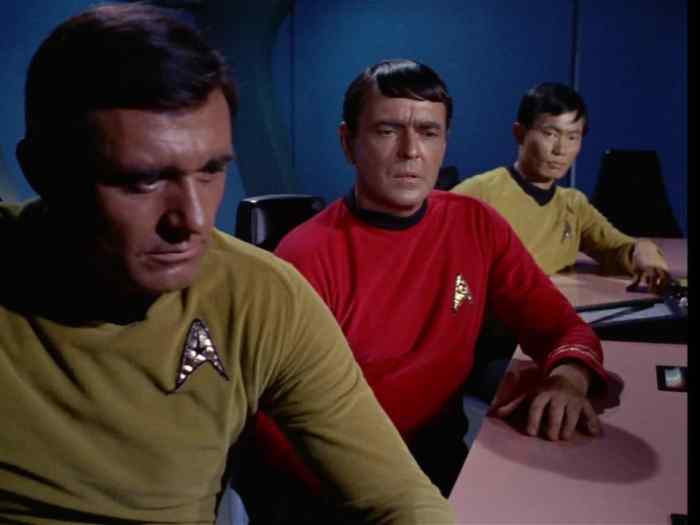
This stand by Kirk against bigotry parallels the improved Civil Rights records of some liberals during the 1960s. Presidents Kennedy and Lyndon Johnson, pressured by the Civil Rights movement and popular opinion, supported civil rights in part because it was the right thing to do, but also because America’s entrenched and government-supported racism was accurately perceived by these presidents as damaging to America’s image during the Cold War (Reeves, p. 480-510). Pictures and news films, for instance, of people being attacked by police, dogs, and fire hoses during peaceful civil rights protests in the 1960s shocked most Americans and much of the world.
Over the years, some have understandably criticized the “tokenism” of Star Trek, but in 1966 the diversity found on the bridge, with Spock, Sulu, and Lieutenant Uhura was at the time progressive. To put it in perspective, this 50-year old episode has more diversity than the main cast of Friends from the 1990s, or Game of Thrones today. And yet Kirk acknowledges that even with the progress that’s been made in the 23rd century that bigotry, like that shown by Stiles, is not unknown, and in fact may not be eliminated—only kept off the bridge. This is disturbing, but it’s perhaps realistic that even in Star Trek’s future more work needs to be done to overcome prejudice.
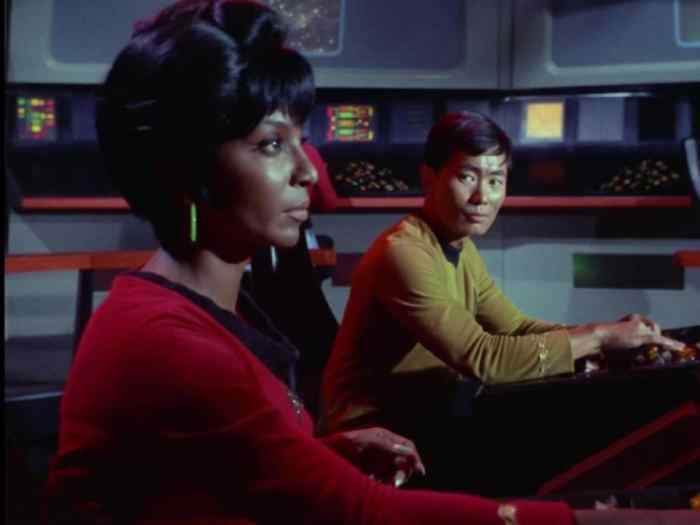
And ironically, at least from our perspective, back on the bridge Sulu agrees with Stiles that added security steps should be taken in case there are Romulan spies on board the Enterprise. The irony is that after Pearl Harbor more than one-hundred thousand Japanese Americans were forcibly removed to concentration camps for years because of racist war hysteria, a grievous trampling on the US Constitution. And George Takei, as a young boy, was, with his family, among those imprisoned in the camps. This tragic mistake, which was even approved by the Supreme Court in 1944, is one that the US is still coming to terms with, and something that Takei has personally helped raise awareness about. The bottom line, however, is that “Balance of Terror” is critiquing this kind of racial suspicion of people during wartime.
Back in the briefing room, Spock shocks everyone by agreeing with Stiles that they must respond immediately to the Romulan aggression, no matter what the cost. Spock recommends this based on his own Vulcan history, saying, “If the Romulans are an offshoot of my Vulcan blood, and I think this is likely, then attack becomes even more imperative.”
“War is never imperative!” Bones interrupts, raising the tension between them in a way that became a hallmark of the series. “It is for them, Doctor,” Spock explains. “Vulcan, like Earth, had its aggressive, colonizing period. Savage, even by Earth standards. And if the Romulans retain this martial philosophy, then weakness is something we dare not show.”
This existential concern about showing “weakness” was a backbone of the Cold War, and a main driver for the Vietnam War, which at the time of this episode was nearing its peak. The core idea held by almost everyone in the US national security establishment, including Secretary McNamara—who, as mentioned, inadvertently gave this episode its title—was that Vietnam was like a domino piece, stacked up in a row next to all the other domino pieces of the various countries of Asia—so that if one fell to Communism, they would all fall.
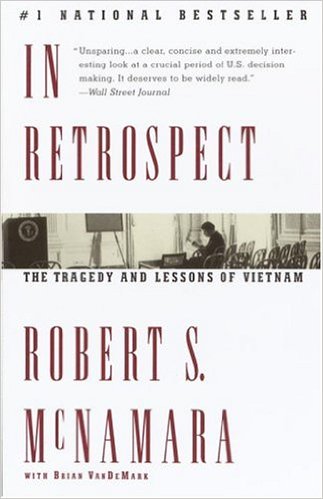
Thirty years after this episode was broadcast, McNamara published his memoirs, and even wept on national TV, for his crucial involvement in what he concluded, as his title said, In Retrospect, was a war that was a colossal mistake, based on a misunderstanding of Vietnam, in part because of the fatally-flawed “domino theory.”
Even in 1966, Star Trek’s references to the Cold War were seen by many. For instance, TV Guide highlighted this episode in that week’s issue with a special “Close-Up,” stating in its short review that “the warlike Romulans have sent a powerful flagship to probe earth’s defenses. Kirk knows that retreat will only invite further devastation. His alternative: counterattack” (Cushman, p. 233)
Vietnam was the first television war, and news programs like the CBS Evening News with Walter Cronkite, which brought the war into millions of American households, aired right before Star Trek’s 7:30 start time in major markets. As Marc Cushman writes, in 1966, “The troops of North Vietnam continued to pour across the DMZ into the South, carrying out their military strikes, testing American defenses, and then retreating to the safety of home. The actions of the Romulans in ‘Balance of Terror’ were clearly designed to mimic the tactics of the Viet Cong of this era” (Cushman, p.234).
This episode of Star Trek, in other words, can be seen as a cultural part of the Cold War. It might even be seen—with its fetishized phasers—as providing support for the military-industrial complex that President Dwight D. Eisenhower warned the nation about in his farewell address in 1961.
That’s part of it. But “Balance of Terror” is more complicated than that. As the cat-and-mouse battles between the Enterprise and the Bird-of-Prey unfold, with both vessels being heavily damaged—and the Enterprise almost destroyed by a Romulan nuclear weapon—we see that the Romulan commander is not a stereotyped and vicious enemy, but instead a sympathetic character.
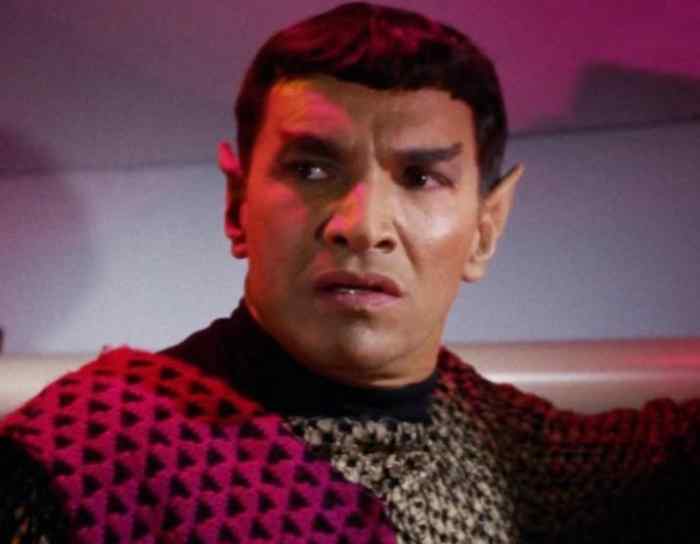
We see the unnamed Romulan commander on his bridge, which, in homage to the submarine movies from which this episode borrows, looks like the bridge of a futuristic submarine, with viewing controls hanging from the center of the ceiling like a periscope. Like Kirk, the Romulan commander knows that the decisions he makes could mean death for millions if a larger war is triggered. The moody lighting, including strange pink hues for the Romulan commander, and shadowy key lighting for Kirk, shows the weight of their decisions literally playing across their faces (McDonough). The Romulan commander says to his second-in-command and friend, with whom he’s served for many years:
No need to tell you what happens when we reach home with proof of the Earthmen’s weakness. And we will have proof. The Earth commander will follow. He must. When he attacks, we will destroy him. Our gift to the homeland, another war….Obedience. Duty. Death and more death….I find myself wishing for destruction before we can return.
Meanwhile on the Enterprise, in a moment of down time in his quarters, Kirk confesses his doubts to Bones. Kirk knows that Bones has been the strongest critic of the pursuit of the Bird-of-Prey, and so Kirk is dropping his Captain’s mask and making himself vulnerable—which reveals the depth of their friendship.
KIRK: I look around that Bridge, and I see the men waiting for me to make the next move. And Bones, what if I’m wrong?
MCCOY: Captain, I—
KIRK: No, I don’t really expect an answer.
MCCOY: But I’ve got one. Something I seldom say to a customer, Jim. In this galaxy, there’s a mathematical probability of three million Earth-type planets. And in all of the universe, three million million galaxies like this. And in all of that, and perhaps more, only one of each of us. Don’t destroy the one named Kirk.
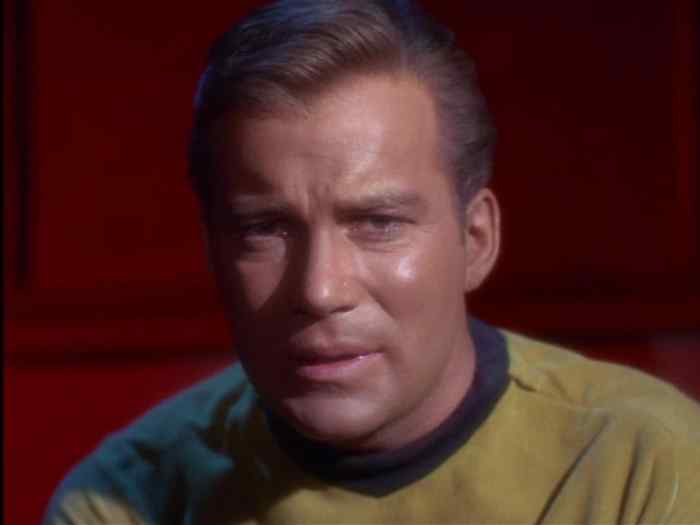
The sympathetic portrayal of both sides locked in this death struggle is almost as much of a critique of the Cold War as it is a reinforcement of it. And Bones, sounding almost like Carl Sagan, infuses this part of the episode with a cosmic and yet empathetic perspective on this cold war in space.
But the costs of war are nonetheless made clear. An all-out war is avoided, just barely, but with the loss of many lives. And as the Romulan commander says to Kirk at the end, “You and I are of a kind. In a different reality, I could have called you friend.”
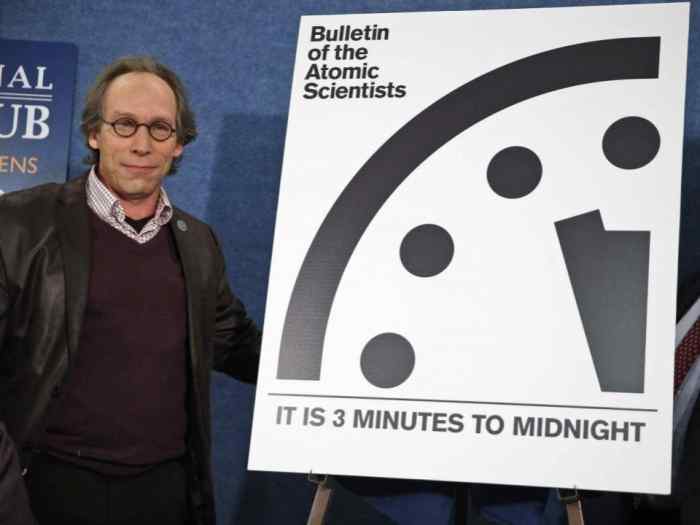
But conflicts of this kind don’t have easy solutions, as we still know today. Since the dawn of the nuclear age, the Bulletin of the Atomic Scientists has published a Doomsday Clock. In 1966, it was set at five minutes to midnight. And today, fifty years later, with much fluctuation of the minute hand in the intervening decades, the clock stands at three minutes to midnight. It is bittersweet to say that this episode is still relevant, because it means that we are all still living in a balance of terror.
Works Cited
Stewart Alsop, “McNamara Thinks About the Unthinkable,” Saturday Evening Post, December 1, 1962, p. 18.
March Cushman with Susan Osborn, These Are The Voyages: TOS Season One, Expanded and Revised Edition, Jacobs/Brown Press, 2013.
Michael Dobbs, One Minute to Midnight: Kennedy, Khrushchev, and Castro on the Brink of Nuclear War, Knopf, 2007.
Edward Gross and Mark A. Altman, The Fifty Year Mission: The First 25 Years, St. Martin’s Press, 2016.
Megan McDonough, Star Trek’s “Balance of Terror”: Shedding Light on a Big Decision, unpublished review.
Robert McNamara with Brian VanDeMark, In Retrospect: The Tragedy and Lessons of Vietnam, Crown, 1995.
Richard Reeves, President Kennedy: Profile of Power, Simon and Schuster, 1993.
Gail Blasser Riley, Wah Ming Chang: Artists and Master of Special Effects, Enslow Publishers, 1995.
Barbara W. Tuchman, The Guns of August, Macmillan, 1962.
What do you think? Leave a comment.
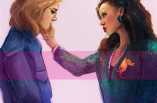
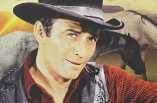
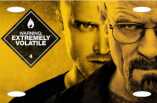

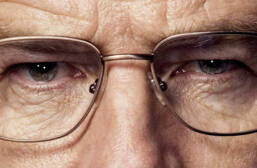
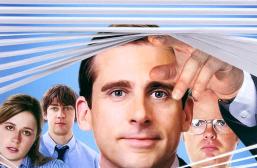

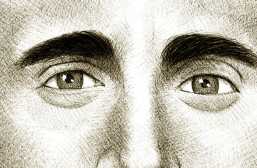

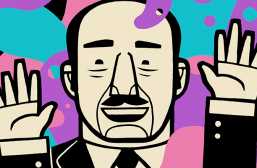
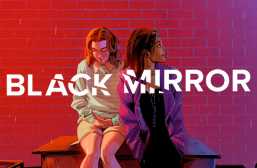
For all the obvious parallels to the Japanese, there is a stronger parallel to China. At the time this episode aired, communist China was a completely closed book to the West. This was still 6 years before Nixon went to China and established relations. That’s also why Romulans and Klingons get their stuff from the same place: like the Russians supplying China, the Klingons sell ships to the Romulans.
If anyone want to stream the episode, it is available for free on archive:
https://archive.org/details/Star.Trek.TOS.1×14
I hear this episode is a major inspiration to the upcoming Star Trek Discovery series. Hear hear!
I remember when I had watched this episode for the first time, and liked it a lot, I told a friend about it. It turned out she was appalled, especially by the line “In a different reality, I could have called you friend” (which I had found very touching). She considered it trite, clichéd, and war-glorifying, part of a highly questionable soldier ethics.
This is a fine example of what science fiction should be. Meaningful episode with great references.
Brilliant, Ben. Great reading. It’s episodes like this that I use to illustrate to people how great ST:TOS was — the bold and intelligent scripts, the depth of subtlety to the stories. Season One stories particularly borrowed from Shakespeare, recent history, and even headlines, to provide topical entertainment in the guise of outer space adventure.
I think the episode owes much to Dick Powell’s 1957 film THE ENEMY BELOW (from the great Denys Rayner’s novel) with Robert Mitchum and Curt Jürgens, particularly the two captains gaining respect for each other, and one’s disenchantment with his own military organization. Duty, loyalty, frustration with loss and destruction,… many of the elements of the TOS episode are there in the WW II film. (I’ll admit I have to see RUN SILENT… again, been a long time.) The end of ENEMY BELOW always gets me choked up. Despite their adversarial conflict, the American captain helps his “enemy” to rescue the latter’s dying friend from the sinking U-boat.
Note that this episode, was well as others, is available for streaming on Netflix and other services. And of course, on home video Blu-ray disc.
Thanks, everyone, for your comments. As David writes, The Enemy Below was yet another influence on this episode. And, as he also says, The Enemy Below is a good World War II sub movie that’s worth seeking out. For me, “Balance of Terror” is in my top ten in terms of episodes of the original Star Trek—I’m just not sure what the other nine are right now….
I love Balance of Terror, here’s my slightly arbitrary Best of Original Trek list:
1. Amok Time
2. City on the Edge of Forever
3. Balance of Terror (yay!)
4. The Trouble with Tribbles
5. The Doomsday Machine
6. Friday’s Child
7. Where No Man Has Gone Before
8. Journey t Babel
9. The Naked Time
10. Requiem for Methusalah
Sike—that’s a great list. Mine list is similar, although it changes each time I try to make one lol! Anyway, my top three are the same as yours:
1. Amok Time
2. City on the Edge of Forever
3. Balance of Terror
4. The Doomsday Machine
5. The Enterprise Incident
6. The Tholian Web
7. Mirror, Mirror
8. The Menagerie
9. What Are Little Girls Made Of?
10. Arena
and I’m still leave a lot of favorites out.
My Top Original Star Trek Top 10:
1. City on the Edge of Forever
2. Amok Time
3. The Menagerie (two-parts)
4. Balance of Terror
5. Errand of Mercy
6. The Devil in the Dark
7. This Side of Paradise
8. The Corbomite Maneuver
9. Mirror Mirror
10. Journey to Babel.
I am a big fan of ST:TNG, ST:DSN and ST:Voyager as well, but at 62 years old now, my fond recollections of growing up with the original series remain supreme for me.
Stupendous review of “Balance of Terror,” which is one of the show’s finest episodes. The way suspense is built in the completely is a model of its kind. You brilliantly incorporate Cold War posturings, racial prejudice and the real threat of nuclear obliteration, which of course was as you note part of the BoT screenplay. I was amazed to learn that McNamara’s quote parallels the episode’s title. Just remarkable how this episode mirrored the politics of the time, the Bay of Pigs and other aspects of the Kennedy administration. Magisterial piece here!
As entertaining as the original Star Trek series is… there is no doubt that The Next Generation series is the golden age of Star Trek.
skag: I love TNG as well, but even though they are both Trek for me it’s almost like comparing apples and oranges. For instance, the music which is so dramatic, memorable, and over-the-top on TOS becomes in TNG an often-bland wallpaper background. Picard and Kirk are obviously a study in contrasts in terms of age, looks, nationality, approach, etc. But both are equally great captains imho. There are more “good” episodes of TNG, but that’s largely because it lasted 7 years instead of the 3 that TOS got, etc. But then again I also love the best of DS9 and Voyager just as much.
In any case, there are definitely several episodes of TNG that might be worthy of the kind of in-depth exploration that I attempted here. Maybe you or someone else will be the one to write an article of your favorite TNG episodes?
I watched TNG as I moved from my teens to my twenties. The first two series were really bad I thought, embarrassing at times. But after the Season 3/4 cliff-hanger, it became brilliant. Some episodes were duffers alright, but the dynamic between all the characters, especially Data’s ongoing quest to be human, was great to watch. Again, it was one of those series where the characters transcended the environment they habited.
I especially liked Worf when he would pull the “if I was not in Star Fleet I would kill you routine”. He did it all the time, he threatened every other male on the show at some point, hiding behind Star Fleet rules.
And as the show went on it subverted itself, mixed things up and became a classic bit of telly.
Even so, I got bored by it when they visited yet another planet where the entire population lived in a village with a little fountain in the middle, and no one had cars.
Doubt! DOUBT!
If you follow comic book terminology, you could possibly call TNG the Silver Age, but not the Golden Age: you should save that for the original flowering.
Balance of Terror is my favorite episode because there is a real humanity to it. I love the wedding opening because it is a glimpse of every day life on a star ship and it connects us in the present to the future. I love the not-fully-explained conflict on the Romulan ship which conveys that everyone has their own story, even if we don’t see it. And the commander’s last line gets me every time…
Balance of Terror is on many points a gripping episode if you ignore:
A) the films its based on and
B) the highly problematic ideological underpinnings.
The film doesn’t just transfer submarine war movie elements to a Sci-Fi story regardless if they fit or don’t. And they don’t fit at all, neither the firing of the phaser like depth charges nor the plasma weapon which is some kind of torpedo, but for no clear reason the Enterprise can’t simply step out of its course. And certainly not the whispering on the silent ships. The major problem is the episode essentially remakes situations and stories especially from The Enemy Below and lifts character constellations directly. The Romulan commander, his centurion and the careless nationalist fanatic are clearly a copy from this film.
What’s arguably worse is that the Enemy Below was essentially a film to reintegrate post war Western Germany into the western defence system and to encourage their building of an army. The idea was to show the Wehrmacht as honourable fighters while the evil ones were the SS and other Nazi organisations. So the soldiers which stood on both sides can join together now to fight a new enemy, the Soviets. However this manouvre sweeps the Wehrmacht war crimes under the rug by emphasizing soldier’s duty which was exactly the defense of all Nazis and German soldiers regardless of any crimes they did commit. So the episode’s positive and complex drawing of the Romulan commander has a rather dubious underpinning.
Michel: You make some great points here about both The Enemy Below as well as this episode. One thing to consider, however, is that a TV show has a lot of limitations in terms of what they can show and the shorthand they sometimes need to employ. For instance, as you know, on one level it might be silly that the Romulans aren’t speaking Romulan—although we could potentially say that the Universal Translator is working really well! But, on the other hand, the “foreigners speaking English” thing is used on so, so many programs, many of which are excellent. To give just one example, everyone in the BBC program “I, Claudius” from the 1970s speaks with a British accent rather than Latin with subtitles. Anyway, in terms of your bigger point of the problematic morals involved, I think you illuminate some important issues. I still think for a TV program from 1966 it’s thought-provoking, as well as dramatic, and has also stood the test of time pretty well.
My favorite episode from the original series: first seen when I was 8 or 9 years old, lo these many years ago. It’s stood the test of time.
Some of the genius of the episode is the way the struggle is presented as a contest between two very smart commanders who gain deep respect for the other, supported by good and bad advice from their crew. Arguably what dooms the Romulan is the loss of wise counsel from the Centurion: you could write an alternate story in which Spock’s loss leads to a fatal mistake by Kirk.
Great piece! You might want to take a look at Glen Cook’s novel, “Passage at Arms” which is also a submarine vs. destroyer in space story.
I think Balance of Terror was really on to a fundamental rule of good writing: if you want your fictional battles to be exciting, make them asymmetrical.
After reading this article, I watched this episode again after many years, and was glued to the edge of my chair even though I knew what was going to happen. Thank you for this.
The episode was almost directly lifted from The Enemy Below; watch the back to back and you can almost make a drinking game out of the similarities.
The Romulans were a stand-in for communist China. Like the Romulan Empire, it was fairly isolated at the time. (A bit like North Korea today.) China only opened up after Nixon normalized relations in 1972, thus inspiring an old Vulcan saying. Also, a lot of that distrust of Spock may reflect back to WWII more than the Cold War, since this episode was also a deliberate remake of a couple of WWII submarine movies.
But the Romulans were always much more interesting adversaries, though also more difficult to work into a script. That’s probably why the TNG writers worked so hard to make the Klingons deeper and more interesting.
Balance of Terror was the first episode of the original series I saw, on VHS in the early 90s. A good starter. And really overall an excellent work of television.
I always found Diane Duanes Romulans much more intresting than how they were portrayed in STNG.
Just rewatched this last week, the new SFX were very CGI but just as enjoyable as the old. I think that Star Trek was pretty incredible for touching on social issues and being very entertaining. Thank you for writing About the original episodes, I look forward to writing from you.
I love this episode. I have grown up knowing what romulans “look” like but I wonder what it would have been like to be sitting in front of the TV in 1966 and be surprized by how the romulans looked like Spock… must have been very cool
Romulan Wars!
Not sure if this is going to be of interest to anyone, but I’ve been reading the Star Trek novels describing the Romulan War, and they do a really nice job of explaining why the humans and their allies never actually see the Romulans.
Basically, some higher ups in Starfleet and on Vulcan DO know that the Romulans are a Vulcan splinter race, but the information is confidential so as to avoid creating a schism between Vulcan and the other worlds that will eventually form the Federation. Also, the Romulans wear helmets when engaging in close combat (where they always win, meaning the humans don’t get a chance to examine their bodies) or simply nuke the enemy from orbit.
An excellent write-up for an excellent, memorable and enduring episode!
This cogent article connects the dots between art, history and geopolitics in the mid-20th century. Ben Hufbauer’s analysis is not only thoughtful and perceptive but an important wakeup call for all Americans. I hope teachers and college professors will assign this elegantly constructed essay in their classes. It is a model of excellent writing — economy with depth, an accessible and reader-friendly narrative with flare, and a thesis that boldly goes where few others have gone before!
The Romulans were always my favourite of the Trek ‘villains’ Some of the episodes featuring them in The Next Generation were absolutely superb.
It is basically a remake of the 1957 Movie “The Enemy Below.”
In the original series, Romulans were ancient Romans and Klingons were Soviet Russians. Romulans had a senate and a praetor, and duty and honor, while the Klingons were a totalitarian society where every level spied on the level above and below it.
This is probably the best episode to date; indeed one of the best episodes in the entire series.
It manages to make its social commentary without being overly preachy.
“Balance of Terror” is one of the best episodes of Star Trek, movies included. It is certainly in the running for best episode, period. Not only does it make science fiction accessible to new viewers, by way of nostalgia, it provides an excellent point of reference to real life experiences of the audience (WWII vets) etc just like this article details.
One of the things that I like about this episode is the things we don’t see. The Romulan Commander, for instance, is tired of war. He wants to go home, etc.
TV has produced some wonderful characters and scenarios over the years. It’s time to think of these characters in the same way we think of Dracula say: we can make him for our own time.
I have always felt that BoT is really one of the best, if not the best, episode of the original run. The only thing that really bugs me is the rather convenient coolant leak in the phaser room. I don’t recall if the prior nuclear blast that damaged the ship had anything to do with the leak, because it feels rather conveniently staged for Spock to jump in and save the day.
This is one I like more every time I see it.
This is extremely well written with a very clear thesis. Great read! It makes me want to jump into the Star Trek television series.
This has always been my favorite classic Star Trek episode, with the possible exception of Galileo Seven. My father introduced me to these shows before I was ten years old, and rewatching them at twenty-one I see them with more sophistication each time. I think the fiftieth anniversary of some of these episodes is a wonderful time to look back over them, to see how far Roddenberry was able to look into the future. With the recent casting of a new actor to play Lenard’s old character of Sarek, I may be coming back to this episode soon–going back into it armed with the research and knowledge from this essay will make the experience all the more enjoyable.
As a kid, I always enjoyed the episodes with the Klingons on and the The Romulans because it was so clearly using them as models in the cold war days with fire of the Russion/Klingons and and the cool, steely-eyed Chinese /Romulans. I need to go back and watch those episodes., Thanks for the flashback/
I remember watching that episode when it aired. It made me think then, and it resonates now. Thank you for this well-considered, well-researched essay.
Van Gogh was a crazy guy, but damn he could paint magic on a canvas
In case anyone is interested, here is a video version with more illustrations….
https://www.youtube.com/watch?v=jmlqXW1ea-o&feature=youtu.be
Many television programs such as Star Trek, Charmed and True Blood have many symbolic meanings in them. We watch these television programs that have been created in the under the veil of fiction but instead of writing fiction the writers and directors are trying to decipher the world around them and what has happened, what is happening and what they perceive will happen in the world around them. In my opinion there are three main reasons that the veil of fiction has been added to these stories: 1) To get people to watch the television show in the first place, 2) So they do not offend any who may have witnessed or been involved in a similar thing and 3) So that they can add an interesting plot line around the hard cold facts.
Notice how the arts and hacks who made this show, made sure that everything otherworldly, even fearful was true to what I call Kirbyism w as meant to denote an italic or Roman echoed response, no less than calling the enemies after Romulus, which is the essence of dehumanizing, as the m of Romans or Romumen, is detached and given an almost Richard Liu Lllll, and om not really kidding that much. Even Spock is from Vulcan, a shoot off of Roman, abd how that connection was made ill never know, but alas have become so thoughtfully and decent as they skip to the orders of some federation, also a Roman word, but whose counting. Still even as a kid, I always resented this, as saw it before, how ingratful it was that the people of Vespucci had no correlation on this new Ulysses ship, but have said my connection of Ulysses and Kirk before,still…it was what bothered me so to see this crappy little show and its constance admonishment of all the nuns held sacred, and how flippant they were about how good they all were. Two years ago did a cartoon called The earth rise about an Italian red shirted cog left to die on a planet caldera Vega 5 by a ship called the Anglicize, and its bloated cast and mixed raced crew and Jewish cyclical computer man were all turning into distorted stereotypes to die to a run in with this once red shirted captain now seeking revenge, and out to save from its utopia a fellow yeoman amend Darla Fontana. I have recently gotten it published, but not from who asked for it to begin with , but a compilation who liked my adroitness at drawing wally wood space ships, and too, had to make sure that sadly, but did it as they were nice enough to let a lot get through the others wouldn’t, the imagery of a fallen uss enterprize was enshrouded a tad. But the stoary was the same, in how as a boy i stunningly rooted for Khan, as captain Kirk, like smug Ulysses and his Trojan horse was something my Roman heart couldn’t abide. The joke of yesteryear was that within ten years, the Trekkie’s were supplanted and overshadowed by a roman loving adherent of the ancients in George Lucas, and suddenly federations were supplanted by that most Roman of ideas, the empire vs the republic.
Would it not also be interesting and practical to consider this piece in the context of current military conflicts in Syria?
The author concludes with “It is bittersweet to say that this episode is still relevant, because it means that we are all still living in a balance of terror.” I think a nod to current events contextualizing the time in which the piece is/was written would provide valuable context.
An enjoyable essay to read. I’ve written on nuclear strategy and this essay provides an interesting perceptive on that topic.
Great bit of writing, loved reading the parallels between Star Trek and The Cold War.
I really enjoyed this piece and how informative it was. It is great how you have taken the historical context into account and added a new layer of meaning present-day viewers might miss.